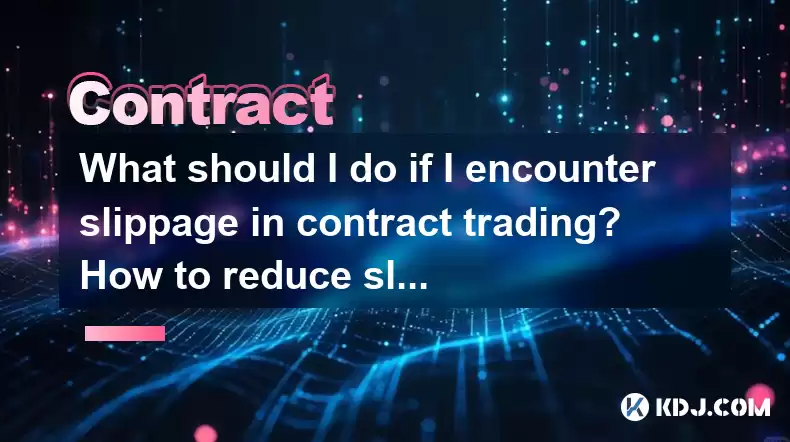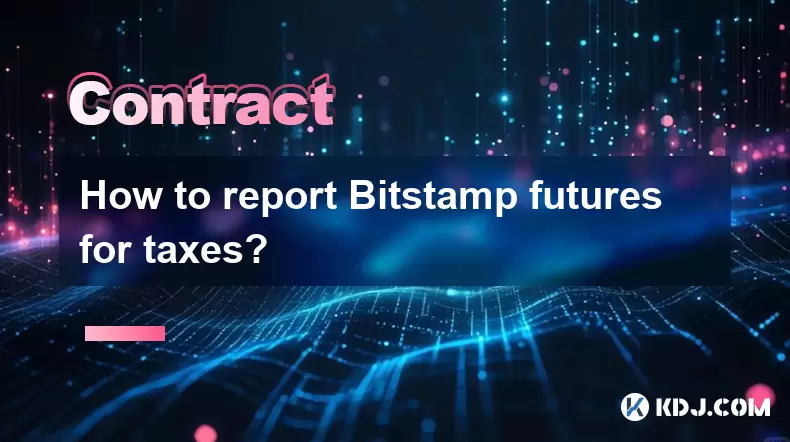-
 Bitcoin
Bitcoin $115000
0.12% -
 Ethereum
Ethereum $3701
4.50% -
 XRP
XRP $3.081
2.99% -
 Tether USDt
Tether USDt $0.0000
-0.01% -
 BNB
BNB $767.9
1.45% -
 Solana
Solana $169.5
3.13% -
 USDC
USDC $0.9999
0.01% -
 Dogecoin
Dogecoin $0.2106
4.30% -
 TRON
TRON $0.3334
1.62% -
 Cardano
Cardano $0.7564
2.54% -
 Stellar
Stellar $0.4165
0.76% -
 Hyperliquid
Hyperliquid $38.75
0.25% -
 Sui
Sui $3.593
3.00% -
 Chainlink
Chainlink $17.08
3.59% -
 Bitcoin Cash
Bitcoin Cash $573.6
4.35% -
 Hedera
Hedera $0.2508
-0.84% -
 Avalanche
Avalanche $23.07
6.46% -
 Ethena USDe
Ethena USDe $1.001
-0.02% -
 Litecoin
Litecoin $120.8
8.17% -
 UNUS SED LEO
UNUS SED LEO $8.943
-0.32% -
 Toncoin
Toncoin $3.400
-5.60% -
 Shiba Inu
Shiba Inu $0.00001255
1.54% -
 Uniswap
Uniswap $9.908
6.32% -
 Polkadot
Polkadot $3.718
2.10% -
 Monero
Monero $303.0
-0.74% -
 Dai
Dai $0.9999
-0.02% -
 Bitget Token
Bitget Token $4.392
0.91% -
 Cronos
Cronos $0.1403
6.31% -
 Pepe
Pepe $0.00001076
1.13% -
 Aave
Aave $267.2
1.80%
What should I do if I encounter slippage in contract trading? How to reduce slippage losses?
To minimize slippage in contract trading, use limit orders, trade during high liquidity periods, and consider algorithmic trading to optimize execution and reduce losses.
Apr 27, 2025 at 08:43 pm

Title: What Should I Do If I Encounter Slippage in Contract Trading? How to Reduce Slippage Losses?
Slippage is a common phenomenon in contract trading within the cryptocurrency market, where the executed price of a trade differs from the expected price. This can occur due to market volatility, liquidity issues, or delays in order execution. Understanding and managing slippage is crucial for traders to minimize losses and improve trading efficiency. This article will explore what to do when encountering slippage in contract trading and provide strategies to reduce slippage losses.
What is Slippage in Contract Trading?
Slippage occurs when there is a difference between the price at which a trader expects to execute a trade and the actual price at which the trade is executed. In the context of contract trading, such as futures and options in the cryptocurrency market, slippage can be particularly impactful due to the high volatility and rapid price movements. Slippage can lead to unexpected losses, making it essential for traders to understand and manage this risk.
Why Does Slippage Occur in Contract Trading?
Several factors contribute to slippage in contract trading. Market volatility is a primary cause, as rapid price changes can result in orders being filled at prices different from what was intended. Liquidity also plays a crucial role; in markets with low liquidity, there may not be enough buyers or sellers to fill an order at the desired price, leading to slippage. Additionally, delays in order execution due to technical issues or slow internet connections can exacerbate slippage.
Actions to Take When Encountering Slippage
When you encounter slippage in contract trading, it's important to take immediate action to mitigate potential losses. Here are some steps you can follow:
Review Your Trade Execution: Analyze the trade to understand why slippage occurred. Was it due to high volatility, low liquidity, or an execution delay? Understanding the cause can help you adjust your trading strategy.
Adjust Your Order Types: Consider using limit orders instead of market orders. Limit orders allow you to set a specific price at which you are willing to buy or sell, reducing the risk of slippage.
Monitor Market Conditions: Keep a close eye on market volatility and liquidity. If you notice increased volatility or decreased liquidity, it may be wise to adjust your trading strategy or wait for more favorable conditions.
Use Slippage Protection Tools: Some trading platforms offer tools to protect against slippage, such as setting a maximum slippage tolerance. Utilize these tools to safeguard your trades.
Strategies to Reduce Slippage Losses
Reducing slippage losses requires a proactive approach and the implementation of effective trading strategies. Here are some strategies to consider:
Trade During High Liquidity Periods: Liquidity is often higher during certain times of the day, such as when major markets are open. Trading during these periods can reduce the likelihood of slippage.
Use Smaller Order Sizes: Breaking up large orders into smaller ones can help minimize slippage. Smaller orders are less likely to move the market and can be filled more easily at the desired price.
Implement Stop-Loss Orders: Using stop-loss orders can help limit potential losses due to slippage. A stop-loss order will automatically sell your position if the price reaches a certain level, helping to manage risk.
Choose the Right Trading Platform: Select a trading platform that offers fast execution and high liquidity. Platforms with robust infrastructure and a large user base can help reduce slippage.
Advanced Techniques to Minimize Slippage
For more experienced traders, advanced techniques can further minimize slippage. Here are some methods to consider:
Algorithmic Trading: Using algorithms to execute trades can help reduce slippage by automating the process and executing orders at optimal times. Algorithmic trading can take into account market conditions and adjust orders accordingly.
Time-Weighted Average Price (TWAP) Orders: TWAP orders spread out the execution of a large order over a specified time period, helping to minimize market impact and reduce slippage.
Volume-Weighted Average Price (VWAP) Orders: VWAP orders execute trades based on the average price weighted by volume, which can help achieve better execution prices and reduce slippage.
Iceberg Orders: Iceberg orders allow you to place large orders while only revealing a small portion of the order to the market at a time. This can help minimize market impact and reduce slippage.
Monitoring and Adjusting Your Trading Strategy
To effectively manage slippage, it's important to continuously monitor and adjust your trading strategy. Here are some tips for ongoing management:
Keep a Trading Journal: Document your trades, including instances of slippage, to identify patterns and areas for improvement. A trading journal can help you refine your strategy over time.
Stay Informed: Keep up-to-date with market news and events that could impact volatility and liquidity. Being informed can help you anticipate and prepare for potential slippage.
Test and Refine: Regularly test different trading strategies and order types to see what works best for you. Experimenting with different approaches can help you find the most effective way to minimize slippage.
Seek Professional Advice: If you're struggling to manage slippage, consider seeking advice from a professional trader or financial advisor. Expert guidance can provide valuable insights and help you improve your trading performance.
Frequently Asked Questions
Q: Can slippage be completely eliminated in contract trading?
A: While it's not possible to completely eliminate slippage due to the inherent nature of market dynamics, traders can take various steps to minimize its impact. Using limit orders, trading during high liquidity periods, and employing advanced trading techniques can significantly reduce slippage.
Q: How does slippage affect different types of contract trading, such as futures and options?
A: Slippage can affect futures and options trading differently due to their unique characteristics. Futures contracts are often more liquid, which can reduce slippage, but they are also more susceptible to rapid price movements. Options, on the other hand, may have lower liquidity, leading to higher slippage, but they offer more flexibility in terms of trading strategies.
Q: Are there any specific indicators or tools that can help predict slippage?
A: While there are no specific indicators that can predict slippage with certainty, traders can use tools like volatility indicators, liquidity indicators, and order book analysis to gauge the likelihood of slippage. These tools can help traders make more informed decisions and adjust their strategies accordingly.
Q: How does the choice of trading platform impact slippage?
A: The choice of trading platform can significantly impact slippage. Platforms with fast execution speeds, high liquidity, and robust infrastructure can help minimize slippage. It's important to choose a platform that aligns with your trading needs and offers the tools and features necessary to manage slippage effectively.
Disclaimer:info@kdj.com
The information provided is not trading advice. kdj.com does not assume any responsibility for any investments made based on the information provided in this article. Cryptocurrencies are highly volatile and it is highly recommended that you invest with caution after thorough research!
If you believe that the content used on this website infringes your copyright, please contact us immediately (info@kdj.com) and we will delete it promptly.
- Shiba Inu's Ranking: What's Happening with the Cryptocurrency?
- 2025-08-05 19:10:13
- Cryptos Under $1: BlockchainFX vs. Shiba Inu - What's the Hype?
- 2025-08-05 19:10:13
- MYX Finance Price Surge: Is the Stock Jump Justified?
- 2025-08-05 18:30:12
- Crypto, CeFi, and Trust Gaps: Why the Issues Persist in 2025
- 2025-08-05 18:30:12
- Solana Memecoin Launchpads: A Wild Ride with LetsBONK.fun Leading the Charge
- 2025-08-05 17:30:12
- Crypto Volatility & Token Unlocks: Navigating the Storm
- 2025-08-05 16:30:13
Related knowledge

Why is my Bitstamp futures position being liquidated?
Jul 23,2025 at 11:08am
Understanding Futures Liquidation on BitstampFutures trading on Bitstamp involves borrowing funds to open leveraged positions, which amplifies both po...

How to report Bitstamp futures for taxes?
Jul 30,2025 at 08:35am
Understanding Bitstamp Futures and Taxable EventsWhen trading Bitstamp futures, it’s essential to recognize that these financial instruments are treat...

Does Bitstamp offer inverse contracts?
Jul 23,2025 at 01:28pm
Understanding Inverse Contracts in Cryptocurrency TradingIn the realm of cryptocurrency derivatives, inverse contracts are a specific type of futures ...

What is the difference between futures and perpetuals on Bitstamp?
Jul 27,2025 at 05:08am
Understanding Futures Contracts on BitstampFutures contracts on Bitstamp are financial derivatives that allow traders to speculate on the future price...

How to find your Bitstamp futures trade history?
Jul 23,2025 at 08:07am
Understanding Bitstamp and Futures Trading AvailabilityAs of the current state of Bitstamp’s service offerings, it is critical to clarify that Bitstam...

Can I use a trailing stop on Bitstamp futures?
Jul 23,2025 at 01:42pm
Understanding Trailing Stops in Cryptocurrency TradingA trailing stop is a dynamic type of stop-loss order that adjusts automatically as the price of ...

Why is my Bitstamp futures position being liquidated?
Jul 23,2025 at 11:08am
Understanding Futures Liquidation on BitstampFutures trading on Bitstamp involves borrowing funds to open leveraged positions, which amplifies both po...

How to report Bitstamp futures for taxes?
Jul 30,2025 at 08:35am
Understanding Bitstamp Futures and Taxable EventsWhen trading Bitstamp futures, it’s essential to recognize that these financial instruments are treat...

Does Bitstamp offer inverse contracts?
Jul 23,2025 at 01:28pm
Understanding Inverse Contracts in Cryptocurrency TradingIn the realm of cryptocurrency derivatives, inverse contracts are a specific type of futures ...

What is the difference between futures and perpetuals on Bitstamp?
Jul 27,2025 at 05:08am
Understanding Futures Contracts on BitstampFutures contracts on Bitstamp are financial derivatives that allow traders to speculate on the future price...

How to find your Bitstamp futures trade history?
Jul 23,2025 at 08:07am
Understanding Bitstamp and Futures Trading AvailabilityAs of the current state of Bitstamp’s service offerings, it is critical to clarify that Bitstam...

Can I use a trailing stop on Bitstamp futures?
Jul 23,2025 at 01:42pm
Understanding Trailing Stops in Cryptocurrency TradingA trailing stop is a dynamic type of stop-loss order that adjusts automatically as the price of ...
See all articles

























































































